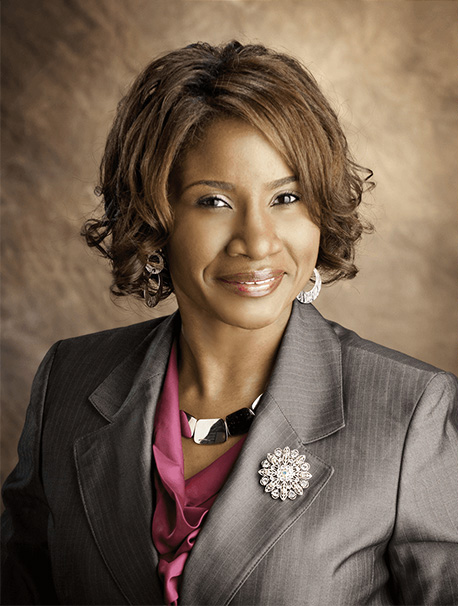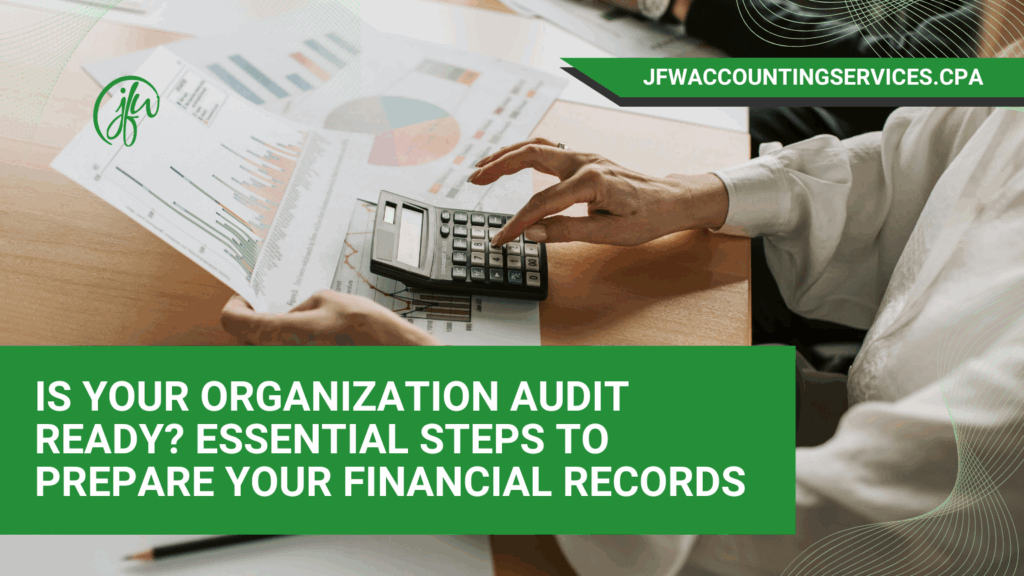The question keeps many organizational leaders awake at night: when auditors arrive, will your financial records pass their scrutiny? Audit readiness extends beyond having clean books. It requires systematic preparation, proper documentation, and internal controls that can withstand professional examination. The difference between a smooth audit and a stressful experience often comes down to preparation that happens months before the auditors walk through your door, whether you’re running a nonprofit organization or a for-profit business.
Start with Your Documentation Foundation for Audit Readiness
Audit documentation should clearly state the nature, purpose, timing, the accounting records reviewed, the approach, and conclusions with evidence backing it up. This principle applies equally to your internal record-keeping.
Your accounting records should tell a complete story. Every transaction needs supporting documentation – original invoices, receipts, purchase orders, contracts, and approval documentation. Each expense requires supporting documents for each expense account, proper bill or disbursement request vouchers, and confirmation that expenses were part of the company’s budget.
Create a systematic filing system that allows quick retrieval of any document. Digital solutions often work best, but the key is consistency. When an auditor asks for backup documentation for a specific transaction, you should be able to locate it within minutes, not hours.
Financial Statements That Stand Up to Scrutiny
Financial statements provide a snapshot of your organization’s financial performance over a specific period. For nonprofits, this includes the statement of financial position, statement of activities, statement of functional expenses, and statement of cash flows. For-profit organizations focus on balance sheets, income statements, and cash flow statements. Auditors assess these statements for accuracy, consistency, and adherence to accounting standards – whether that’s GAAP for most organizations or specific nonprofit accounting standards.
Prepare monthly financial statements throughout the year rather than scrambling at year-end. This practice helps identify discrepancies early and ensures your accounting team stays current with proper classifications and adjustments. For nonprofits, this includes proper classification of restricted and unrestricted funds, while for-profit businesses focus on revenue recognition and expense matching principles.
Pay attention to account reconciliations. Bank reconciliations, accounts receivable aging, inventory counts, and fixed asset schedules should be current and accurate. Include trial balance information, the general ledger, the book of accounts, financial statements, IRS documents, and supporting documents for your accounting.
For nonprofits, understanding whether to use cash vs accrual accounting becomes especially important for audit readiness, as auditors will examine your accounting method consistency and compliance with applicable standards.
Internal Controls That Keep Your Organization Audit Ready
Strong internal controls serve dual purposes: they protect your organization from fraud and errors while demonstrating to auditors that your financial reporting process has appropriate safeguards. Auditors evaluate your organization’s internal controls as part of their assessment, regardless of whether you’re a nonprofit or for-profit entity.
Document your accounting procedures and ensure multiple people understand critical processes. Segregation of duties prevents any single person from having too much control over financial transactions. For smaller organizations where complete segregation isn’t possible, compensating controls like management review and approval become essential. Nonprofits should pay special attention to donor fund restrictions and grant compliance requirements, while for-profit businesses focus on revenue recognition and expense authorization controls.
Establish clear authorization levels for different types of transactions. Purchase orders, expense approvals, and payment authorizations should follow documented procedures that match your organization’s size and complexity. For nonprofits, this includes procedures for grant expenditures and donor-restricted fund usage.
Accruals and Cut-off Procedures
Accruals based on actual transactions and events need supporting documents such as invoices, purchase orders and contracts. Your year-end accrual process requires careful attention to ensure transactions are recorded in the correct period.
Develop procedures for identifying and recording year-end accruals. Revenue earned but not yet invoiced, expenses incurred but not yet paid, and prepaid items all need proper accounting treatment. Document your methodology and maintain supporting calculations.
Review your revenue recognition policies to ensure they align with current accounting standards. With changing regulations and new guidance from organizations like the PCAOB, staying current with requirements is crucial.
For organizations with multiple entities or complex structures, understanding financial consolidation processes becomes essential for audit preparation, as auditors will review how you combine and present financial information across your organization.
Technology and Compliance Considerations
The 2024 Yellow Book includes updated requirements for quality management systems that must be designed and implemented by December 15, 2025. Your accounting systems should support these evolving requirements, whether you’re subject to Yellow Book audits as a nonprofit receiving federal funding or following other audit standards.
If you’re considering an accounting system upgrade to improve audit readiness, understanding the implementation process for advanced accounting software can help ensure a smooth transition that enhances your audit preparation capabilities.
Consider whether your current accounting software provides adequate audit trails and reporting capabilities. Modern systems offer features like user access controls, automatic backup procedures, and detailed transaction logs that auditors appreciate. Nonprofits benefit from systems that can track restricted funds and generate compliance reports, while for-profit organizations need robust revenue recognition and financial reporting capabilities.
Growing organizations often find that upgrading their accounting systems becomes necessary to meet audit requirements, especially when moving from basic bookkeeping software to enterprise-level solutions that provide better documentation and reporting capabilities.
Review your data backup and security procedures. Auditors may inquire about how you protect financial data and ensure business continuity. Having documented procedures and tested backup systems demonstrates good organizational practices for both nonprofits and for-profit entities.
Preparing Your Team
Your accounting team’s readiness matters as much as your records. Communicate with your internal team to set expectations, ensure their needs are met, and outline a timeline and responsibilities.
Schedule pre-audit meetings to review procedures and assign responsibilities. Team members should understand what auditors will request and how to respond to inquiries. Clear communication reduces stress and helps the audit proceed smoothly.
Prepare a comprehensive list of potential audit requests before the auditors arrive. This proactive approach demonstrates professionalism and can accelerate the audit timeline.
Timing and Planning Considerations
Most organizations get their financials audited on an annual basis, typically the quarter after year end for the prior fiscal year’s financials. Start your preparation at least three months before your audit date, regardless of your organization type.
Create an audit preparation timeline that includes key milestones: completing year-end adjustments, finalizing account reconciliations, gathering supporting documentation, and conducting internal reviews. This timeline should align with your auditor’s requirements and your organization’s operational needs. Nonprofits should include time for preparing grant compliance documentation and donor restriction analyses, while for-profit businesses should focus on revenue recognition documentation and tax compliance materials.
Consider conducting an internal review or pre-audit before the formal audit begins. This practice helps identify potential issues and allows time for corrections.
Building Your Audit-Ready Foundation
Audit readiness is an ongoing process, not a year-end scramble. Regular attention to documentation, internal controls, and compliance requirements makes the formal audit process smoother and more valuable for your organization.
Implementing ongoing financial health monitoring through key performance indicators helps maintain audit readiness throughout the year by identifying potential issues before they become audit findings.
The investment in proper preparation pays dividends beyond the audit itself. Well-organized financial records and strong internal controls support better decision-making throughout the year. For nonprofits, this means better stewardship of donor funds and improved grant compliance. For-profit organizations, it translates to stronger investor confidence and better access to capital.
According to the Journal of Accountancy, 91% of audit committee members and 79% of executives say financial statement audits flag opportunities to improve organizational performance. This applies equally to mission-driven nonprofits seeking to maximize their impact and for-profit businesses aiming to enhance their competitive position.
Whether your organization is subject to single audits due to federal funding, investor-required audits, or voluntary audits for stakeholder confidence, the preparation principles remain consistent: thorough documentation, strong internal controls, and systematic processes that support accurate financial reporting.
Contact us today to learn how we can help prepare your accounting records for audit readiness. Our experienced team provides comprehensive guidance on documentation requirements, internal controls, and compliance procedures to ensure your organization is prepared for professional scrutiny.

Jo-Anne Williams Barnes, is a Certified Public Accountant (CPA) and Chartered Global Management Accountant (CGMA) holding a Master’s of Science in Accounting (MSA) and a Master’s in Business Administration (MBA). Additionally, she holds a Bachelor of Science (BS) in Accounting from the University of Baltimore and is a seasoned accounting professional with several years of experience in the field of managing financial records for non-profits, small, medium, and large businesses. Jo-Anne is a certified Sage Intacct Accounting and Implementation Specialist, a certified QuickBooks ProAdvisor, an AICPA Not-for-Profit Certificate II holder, and Standard for Excellence Licensed Consultant. Additionally, Jo-Anne is a member of American Institute of Certified Public Accountant (AICPA), Maryland Association of Certified Public Accountants (MACPA), and Greater Washington Society of Certified Public Accountants (GWSCPA) where she continues to keep abreast on the latest industry trends and changes.

